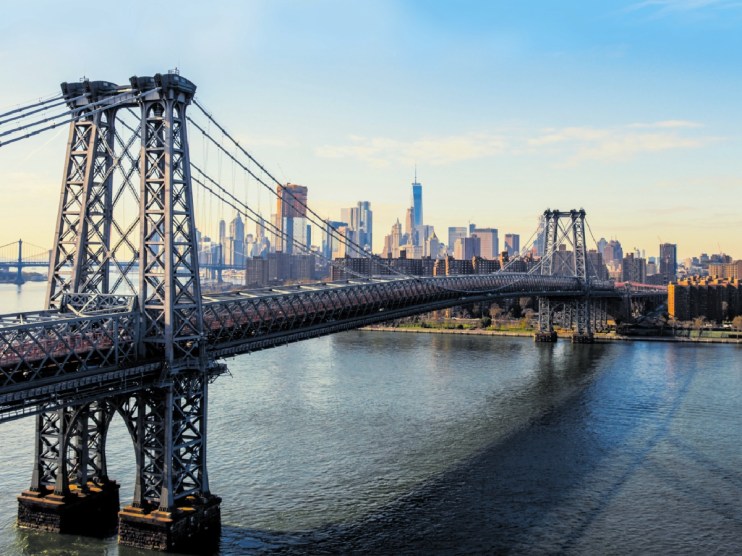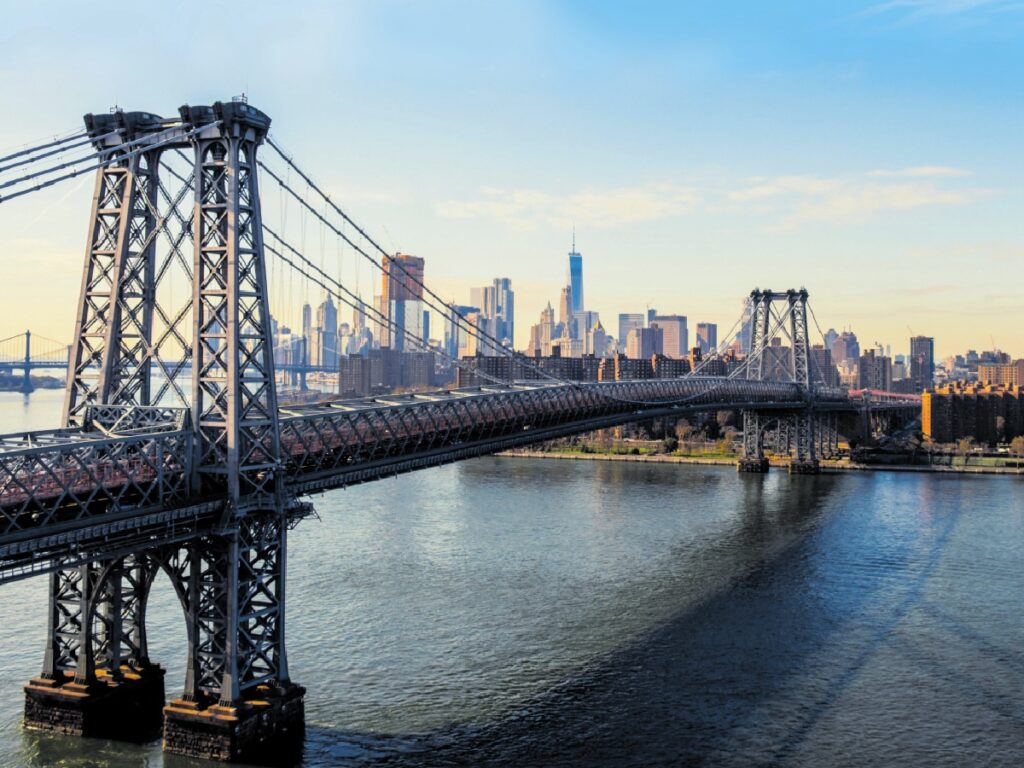
Williamsburg is the hipster capital of the world, the Brooklyn neighbourhood where a thousand moustaches were born. Yet the New York City district has largely thrown off its bohemian past to become a hub for gourmet restaurants and chic hotels.
Williamsburg’s economy collapsed in the 1970s with the deindustrialisation of New York. The area’s low rents later started attracting artists in the 1990s. This drove a period of fast-paced gentrification that has, over the past few decades, experienced a building boom that has seen the Williamsburg waterfront come to be lined with luxury high-rise developments. Williamsburg is now, more than ever, the place to be seen.
One Long Island native staying at the Williamsburg Hotel tells me she used to drive through Williamsburg as fast as possible to avoid breaking down in the area on her way to Manhattan. She said the Williamsburg of the 1970s was the sort of place you would be scared to go to. Now, adverts for luxury jeweller Cartier cover the walls.
Williamsburg’s rise is not surprising. The area, on the Hudson River, offers spectacular views of Manhattan and is well-connected to the rest of New York City via subway, boat, and the Williamsburg Bridge. The laid-back vibe also offers a break from the overwhelming chaos of Manhattan and acts as a gateway to the New York boroughs of Brooklyn and Queens.
The neighbourhood has in the past been referred to as “Little Berlin” for its vintage shops and nightlife. Its industrial architecture is also reminiscent of the German capital, while the area’s walkability boosts its European vibe.
All of these factors have made Williamsburg an attractive place to visit and led to the development of an array of new hotels. The Williamsburg Hotel is a prime example. The hotel combines an industrial aesthetic with the hipster chic vibe Brooklyn is known for. Its rooms pair arts and crafts furniture with heavy-duty fittings while offering panoramic views of New York.
Most impressive is the Williamsburg Hotel’s rooftop pool and terrace. The pool is the perfect place for a morning swim while the terrace, which has its own bar, is a prime location for a late-night drink. The sky garden’s vantage point as one of the tallest buildings on the Hudson River allows for genuinely amazing sunrise and sunset views over Manhattan. A strange and impressive space in the shape of a huge water tank perched on the top of the hotel offers even higher views over the city.
The nearby Penny Williamsburg offers similarly chic industrial vibes, with its mini-studio style rooms that provide a more self-sufficient offering. The hotel is a convenient place to stay in the heart of Williamsburg, providing easy access to the area’s bar and nightlife scene. The hotel’s brutalist-style suites offer a taste of the loft-style living Williamsburg built its name upon. Its co-working space also makes it a perfect bolt-hole for digital nomads seeking a creative place to live and work.
Williamsburg is also a prime location for venturing out into wider Brooklyn. The two hotels’ free-to-use bicycles offer a convenient means of exploring the borough’s more interesting areas, and seeing the city in full. Brooklyn’s Prospect Park is particularly worth a visit.
It is, however, the island of Manhattan that’s likely to be your main focus. Glimpses of the towering metropolis are offered through the steel girders of the gargantuan Williamsburg Bridge, which stretches more than 2km across the tumultuous east river that separates Manhattan from Long Island.
It is only while on the island of Manhattan, however, that it’s possible to truly understand the size and scale of the place. Stepping off the Williamsburg Bridge, you are immediately hit with a raw, electrifying energy. It’s easy to become overwhelmed by the sheer extremity of the stimulus that surrounds you. Central Park feels like a relative oasis. Visitors are reminded the park is built over the site of Seneca Village, a settlement formerly occupied by free Black Americans in the 19th century, before it was torn down in 1857. Looking out from the park, it is clear New York’s appetite to build, build, build never ended.
The Ritz-Carlton Hotel, which towers over Central Park from its position on the very southern end of it, offers all that could be expected of America’s biggest city while allowing you to see Manhattan as a single, cohesive organism. The hotel itself gives a sense of respite, detached from the chaos of Manhattan’s streets. It seems to embody the spirit of high-class, old money New York.
Wandering the streets of Manhattan, I feel New York is defined by the pursuit of something ‘more,’ manifested in both the upwards expansion of the skyline and the endless reinvention and rebuilding of the outer boroughs.
It is this constant momentum that gives New York its personality. It is a city of sharp contrasts, and the frictions those conflicting forces create, that fill New York with an energy that’s unrivalled anywhere in the world.
Any trip to New York is simply a snapshot of the city at a particular point in its history – so it’s worth visiting time and time again.



